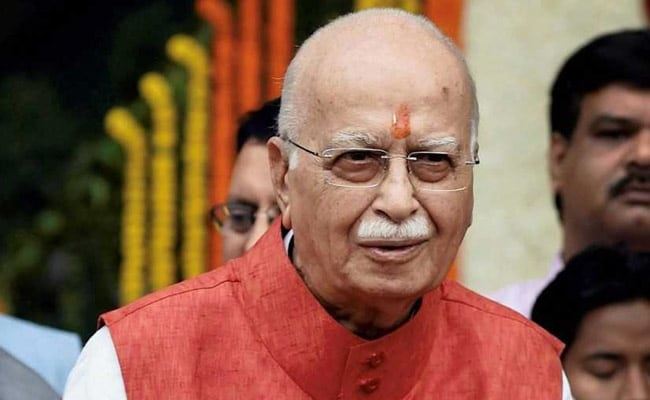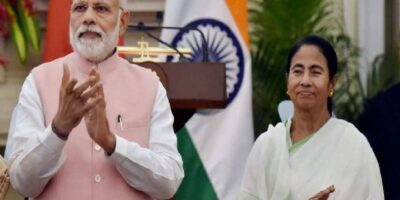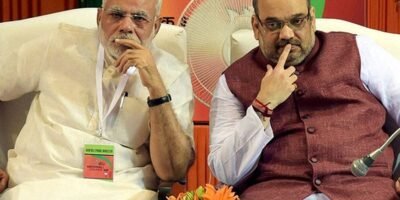How Advani’s Rath Yatra Rescued the BJP From Mandal

“Raam naam jaadu aisa, Ram naam man bhaye. Man ki Ayodhya tab tak sooni, poke tak Ram na aaye re’ – a melody from a mainstream Hindi film featuring Nutan was on the tape sent to Lal Krishna Advani by performing artist Manoj Kumar, only multi-day before he set out on his Rath Yatra.
A 10,000-km-long adventure from Somnath in Gujarat to Ayodhya in Uttar Pradesh on a cooled Toyota transport turned-chariot, was the brainchild Pramod Mahajan, a rising star at the time among the positions of Bharatiya Janata Party leaders. The mission was to embrace a mass contact program to help prepare to back to assemble a terrific sanctuary at Ayodhya, which a few Hindus accept is the place Ram was conceived.
Advani’s yatra would be high on imagery, directly from the ‘rath’ to the decision of Somnath Temple as the beginning stage for the yatra. The sanctuary in Gujarat was an especially pined for focus for Mahmood of Ghazni – a Turkish Sultan who pillaged India multiple times in a range of 25 years in AD 1001-26. The choice to pick the ‘Hindus just’ sanctuary was overwhelming with religious and political imagery.
In his self-portrayal, ‘My Country, My Life’, Advani follows the historical backdrop of the reclamation and revamping of the Somnath Temple. The Nawab of Junagadh deserted to Pakistan leaving the Hindu-ruled territory to India. The proposition to remake the sanctuary was met with obstruction from Maulana Abul Kalam Azad however Sardar Patel accepted an inflexible remain on the issue and the proposition got the endorsement of the Nehru Cabinet.
What Necessitated the Rath Yatra
On 7 August 1990, Prime Minister VP Singh acknowledged the Mandal Commission Report which had been lying in chilly stockpiling for a long time. The commission was established by the Morarji Desai government and given two augmentations by the Indira Gandhi government “to decide the criteria for characterizing the socially and instructively in reverse classes” and “to suggest ventures for their progression.”
The command of the Mandal Commission was to recognize socially and instructively in reverse classes. It suggested 27% booking for Other Backward Classes – which were basically non-Dalit lower position Hindus, at all dimensions of the taxpayer-supported organization. Essentially, it implied 52% of the nation’s populace at the time was qualified for reservation in government organizations and divisions.
The remainder of the – upper position Hindu and minority understudies – ascended in the challenge against the administration’s choice.
In any case, when a 19-year-old Delhi University understudy, Rajeev Goswami, set himself ablaze, the challenges were never again simply the VP Singh government’s cerebral pain.
The Bharatiya Janata Party’s Quandary
In 1989, the gathering had challenged its second broad decision and with the total sponsorship of the RSS it’s unit on the ground, it went from 2 to 85 situates in the Lok Sabha. Rather than going into a partnership with the National Front, the BJP gave outside help to the administration and aided VP Singh to become Prime Minister. In this way, while Advani and Vajpayee were not associated with everyday administration and arrangement making, they had the numbers to evacuate VP Singh as the Prime Minister and disintegrate the legislature.
The BJP needed to stand firm.
It couldn’t bolster Mandal in light of the fact that it oppressed their upper station Hindu vote base. Be that as it may, it would not like to be believed to be against the lower standings who’d recently been surrendered a leg by the legislature.
Gathering president LK Advani needed to change the discussion from the station and share to religion and Ram. Since that is the thing that he thought would join upper position and lower station Hindus – whom Mandal had tossed into strife with one another.
Along these lines, Ram was picked as the perfect man, Ayodhya the last goal, and a Ram Mandir, a definitive objective.
How the Rath Yatra Ended
Only days before the Rath Yatra was to finish in kar seva or charitable effort at Ayodhya, on 18 October 1990, first-time Chief Minister of Bihar Lalu Prasad Yadav ventured into capture the BJP pioneer in Samastipur. At the time, Lalu was a piece of the Janata Dal, which was especially a piece of the VP Singh-drove National Front government at the Center. On his requests, Advani was kept in an undisclosed area for seven days so the development could fail out.
Normally, the BJP pulled back help from the Center, requiring snap surveys. The nation was left politically unsteady and publicly isolated.
For the following two years, the BJP stayed in resistance while the RSS and its subsidiaries like the Vishwa Hindu Parishad loaned energy to the Ram Mandir development.
Advani’s rath yatra gotten underway a progression of occasions which not just brought about the decimation of the Babri Masjid two years after the fact, yet additionally re-characterized the nation’s legislative issues.
It got rid of the reading material thought of secularism and made “patriot” and “common” goalposts, the meanings of which keep on developing today.




Comments are Closed